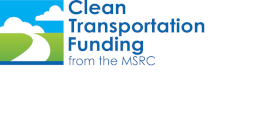Diesel exhaust emissions from older, heavy-duty construction equipment contribute significantly to ozone formation and particulate pollution in the South Coast Air District. A cost-effective strategy to reduce diesel oxides of nitrogen and toxic particulate matter emissions from heavy-duty construction equipment is to install a new diesel engine in lieu of rebuilding the existing engine. Emissions from new, certified Tier 2 diesel engines are dramatically lower as compared to older, unregulated engines.
MSRC Clean Transportation Funds were used to purchase the new electronically controlled lower emission diesel engines. The total contract value was $466,807. Sukut contributed all labor costs, as well as a cash contribution in an amount equal to the cost of rebuilding the existing engines. Total project cost for the seven vehicles was $603,807
Sukut performed the re-powers using their own trained heavy-duty equipment mechanics and supervisors. The re-powers required removal of the existing, mechanically-operated engines, and installation of the new, electronically-controlled engines. As the new engines include computer systems, sensors, and wiring harnesses not included with the original engine, the re-power process is much more involved that simply removing the old engine and installing the new engine. In addition, Sukut purchased laptop computers for the field mechanics and provided specialized training to allow them to start, analyze, and tune the new engines to achieve optimum efficiency.
Sukut Equipment, Inc. partnered with the MSRC to re-power seven heavy-duty off-road construction vehicles. The original unregulated diesel engine was replaced with a new, certified diesel engine, as follows:
Four (4) Single Engine Scrapers, Caterpillar Model 651B, originally equipped with 1978-1979 Caterpillar Model D346 engines, re-powered with model year 2005 Caterpillar 3156E engines;
Three (3) Caterpillar 824C wheel dozers, orignally equipped with model year 1978-1986 Caterpillar Model 3406 engines, repowered with model year 2005 Caterpillar 3406 engines.
The re-powering of off-road heavy-duty construction equipment, in lieu of rebuilding the existing older diesel engine, is applicable to a significant number of construction vehicles operating within the South Coast AQMD. Given the financial incentives offered by the MSRC, plus the fuel cost savings resulting from higher efficiencies offered by the new engine, this air quality improvement strategy is very popular with equipment operators.
The vehicles now produced dramatically reduced levels of NOx and particulate matter. Also, due to the greater efficiency of the computer controlled engine technology, fuel economy has also increased significantly.
All vehicle re-powers have been completed, and all vehicles are currently operating at construction sites within the South Coast AQMD.
